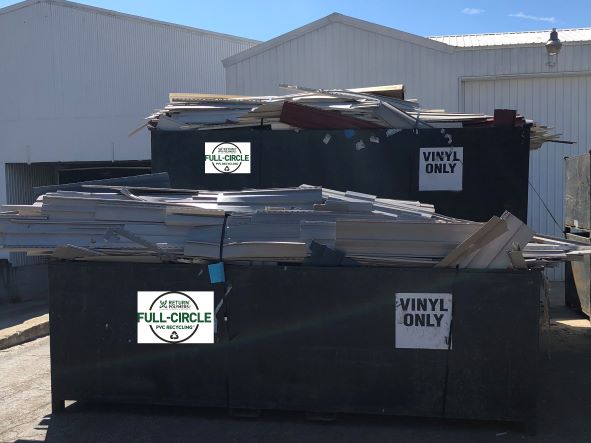A pilot program in northeastern Ohio is bringing materials use and management stakeholders together to increase vinyl siding recycling rates. Since the program officially launched in September 2021, the Vinyl Siding Recycling Coalition now includes 14 collection sites and three recyclers—each ready to set up recycling and collection services.
Started by the Alexandria, Va.-based Vinyl Siding Institute (VSI), the program is open to clean, dirt-free polyvinyl chloride (PVC) siding, soffit, and accessories used for residential purposes. Other rigid PVC products allowed for drop off include items like vinyl downspouts, pipe, and fencing. The initiative seeks to set recycling standards and coordinate consumers, contractors, distributors, recyclables collectors, transportation, cleaners/recyclers, manufacturers, and other relevant stakeholders while also increasing the amount of postconsumer recyclable materials from September 2021 to September 2022.
“In Northeastern Ohio, there’s significant vinyl siding use—60–70% of homes,” explains Bob Dobson, VSI vice president. “There’s a lot of product being used there—and there’s a lot of product that can be recycled there.” Because several siding manufacturers including Alside Supply, Gentek Building Products, Georgia-Pacific, Progressive Foam Technologies, and ProVia operate in the region.
ISRI is helping develop material, product, and performance standards by working through standards-making organizations and code bodies, and sponsoring certification programs that improve the quality of siding and its installation.
For the better part of a decade, ISRI has included specifications for various PVC recyclable materials, namely, Rigid PVC—Siding; Pipe; Window Profiles; and Flexible PVC. ISRI Senior Economist Bret Biggers is an active member of the Vinyl Sustainability Council and participates on the working group looking at proposing a PVC standard to the American Society for Testing and Materials (ASTM). In addition, he is a member of the ASTM D20 Committee on Plastics.
As the Ohio coalition’s membership continues to grow, so does the number of collection centers that accept and recycle vinyl siding. Recyclers are ready to help. If you’re within 150 miles of these locations, you can participate.
JP Industrial 37844 State Route 518 Lisbon, OH 44432 (330) 853-4886 Return Polymers Inc. 400 Westlake Dr. Ashland, OH 44805 (440) 823-8589 VinylOne 8001 Krueger Ave. Cleveland, OH 44105 (440) 261-5799
“Some of the siding we get goes back into windows or siding,” notes Nick Puckett, director of operations at JP Industrial. “Sometimes it goes into a totally different product. But at the end of the day, it’s getting put back into use and not going into the landfill.”
Although the final amount of material collected in the Ohio pilot is still being calculated, Dobson calls the program a success. VSI may set up future pilots in the eastern U.S. and Canada.
“The larger quantities [of siding] are going to come from remodeling jobs, where vinyl siding that was maybe put up in the 1960s or ‘70s and maybe is past its time, and so that can be taken down back into your cycle,” he says. “You need really 20,000 pounds of cutoffs and product that’s going to be recycled to make it viable.” He says the Ohio program will lead to suture efforts to boost vinyl siding recycling. “It’s a learning experience. We’re trying to add layers of learning to it to make it most effective,” he adds.
More than 1.1 billion pounds of vinyl was recycled in the U.S. and Canada in 2020, according to research conducted by Tarnell Company LLC. This represents a recycling rate of about 35%. Since 2016, overall vinyl recycling has increased 7%. Most of this increase is attributed to pre-consumer recycling; postconsumer recycled material percentages remained flat during the same period.
Photo courtesy of Vinyl Siding Institute. Caption: Bins of collected vinyl siding at Return Polymers in Ashland, Ohio.










